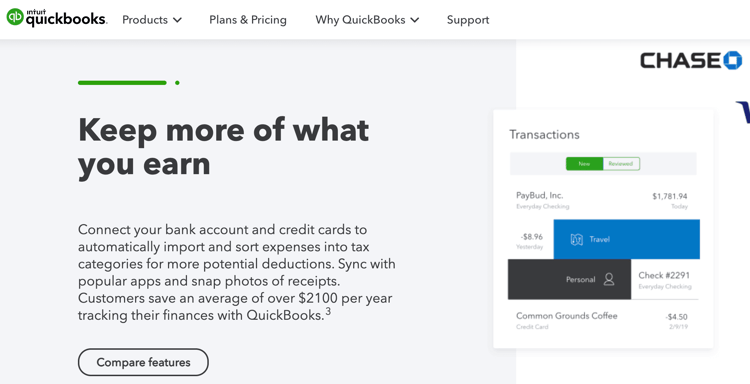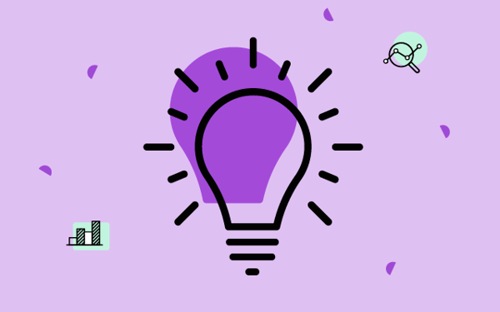In order to stand out in a crowded market, you need to position your solution in a manner that resonates with your prospective customers.
Nothing you say will resonate with your prospects unless you have an intimate understanding of who they are — the types of companies they work for, the goals they strive to achieve, the obstacles they need to overcome, and so on.
B2B buyer personas are essential for anyone who wants to understand their prospects on a deep enough level to make a legitimate impact in their target market.
Elevate your product marketing strategy with this free kit >>
What is a B2B buyer persona?
A B2B buyer persona is a representation of your ideal target customer — a detailed profile of the person for whom your solution is built.
Although this persona is not an actual person, everything about them — their age, their job, their goals, their pain points — is firmly based in reality. You can think of them as an amalgamation of the characteristics and commonalities shared by your actual prospects/customers.

Via OptinMonster.
Before we discuss the utility of B2B buyer personas, let’s clarify two crucial points:
1. You’re not limited to a single persona
You can have as many or as few personas as you need. If this strikes you as odd, consider an example: Let’s say you’re a marketer at Compose, an email marketing software company.
Your solution is useful to all kinds of different people. It’s useful both to Michelle, an independent ecommerce entrepreneur, and to Sean, a marketing manager at a startup.
Michelle and Sean, however, are not similar in any meaningful way. They’re doing different jobs in different industries, encountering different pain points while working towards different goals.
A single persona cannot faithfully represent both Michelle and Sean. And because there are a lot of people who are similar to Michelle, and a lot of other people who are similar to Sean, you’re going to need at least two buyer personas.
Here’s another way to think about it: The more flexible your solution — that is, the wider the range of use cases it can satisfy — the more personas you’ll need.
2. Your persona(s) should evolve over time
Your solution should evolve as your business matures. Whether maturation means addressing more use cases, focusing on a specific set of industries, or something else entirely, your solution should be adjusted accordingly.
With changes in your solution, of course, come changes in your personas. Continuing with our example of the email marketing software company, let’s say Compose was initially launched as a solution for solo entrepreneurs like Michelle. Eventually, for whatever reason, the leaders of the company decided to address a wider range of use cases — thus bringing startup marketing managers like Sean into the picture.
Individual personas can evolve, too. Your understanding of Michelle today may not be the same as it was when your solution initially launched.
Specifics aside, here’s the bottom line: Your target market is dynamic. The personas you use to better understand that market should be dynamic, too.
Why are B2B buyer personas important?
B2B buyer personas are important because they enable you, as a marketer, to position your solution — and speak to your prospects — in a manner that resonates. Failure to effectively position your solution, generally speaking, will result in lackluster demand, poor lead volume, and, ultimately, stagnant revenue.
Admittedly, the relationship between buyer persona quality and revenue is not an especially obvious one; in fact, the relationship between product marketing as a whole and revenue is not an especially obvious one.
But these relationships exist nonetheless — and, intuitively, that makes perfect sense. More thorough buyer personas yield a better understanding of your prospects. This, in turn, yields better positioning and more effective messaging. This, in turn … you get the point.

You don't create messaging as effective as this without thorough personas.
With only a tenuous understanding of Michelle’s goals, you might position your email marketing software as a revenue generation tool. But what if she — and by “she” I mean all the prospective customers she represents — has goals beyond revenue? What if, specifically, she wants to increase the average price of her customers’ orders? Fail to reflect this goal in your positioning and you just might lose Michelle to one of your competitors.
What to include in your B2B buyer persona
A quick note before we get into specifics: As you’re thinking about what to include in your persona, keep in mind the overarching purpose of creating the persona in the first place — to more effectively market your solution to the people for whom it is built. Throughout the persona creation process, it might be helpful to continuously ask yourself this question: “What do my colleagues and I need to know in order to position this product to the best of our ability?”
With that in mind, here are some specific ideas of details you can include in your persona.
(Note: These details can and should be sourced through a combination of interviews — both with customers and prospects — and internal data analytics.)
Demographic & personal information
Your persona should feel like an actual human being. It can be helpful, towards that end, to nail down some demographic and personal characteristics. Ask yourself the following questions:
- What is their age and gender identity?
- Are they married? Do they have children?
- What is their professional and/or educational background?
- What are their interests and hobbies?
Role & company information
It’s especially important, of course, to understand your persona through a professional lens.
- What is their job title?
- In one sentence, what does this person strive to accomplish?
- What kind of company do they work for? How many people work there?
- How many people work on their team/in their department?
Goals, obstacles, & risks
Take another look at your one-sentence summary of the overarching objective your persona is striving to accomplish. No one will buy your solution unless they believe it will make a meaningful difference in the pursuit of this objective.
- What specific goals is your persona working towards in order to fulfill their objective?
- With these goals in mind, how is your persona’s performance evaluated?
- What specific obstacles are keeping them from performing at a higher level?
- What specific risks will they face if they don’t take steps to overcome these obstacles?
As you’re working through these questions, make note of the major benefits your persona stands to reap should they decide to buy your solution.
Hypothetical example of a B2B buyer persona
Everything we’ve discussed up until this point may feel a bit abstract. Let’s make these ideas more concrete by fleshing out one of Compose’s hypothetical personas: Michelle.
Michelle is the 26-year-old founder, CEO, and sole employee of an independent ecommerce company. She worked for an ad agency for three years after getting her marketing degree from a large public university. Running her company keeps Michelle extraordinarily busy, but when she manages to carve out some free time, she enjoys reading, hiking, and attending concerts. She is single and without children.
As a one-woman operation, Michelle is responsible for everything from product design and marketing to order fulfillment and customer service. Specifically from a marketing perspective, Michelle’s goals include expanding her email list, growing her website traffic, and increasing the average price of her customers’ orders. She evaluates her performance by tracking the growth rates of her email list, website traffic, and average order price.
Lack of time is the primary obstacle putting downward pressure on Michelle’s performance. She’s far too busy to teach herself the ins and outs of conversion rate optimization, email list segmentation, and the like. If she doesn’t take steps to get more done in less time, she risks plateauing her revenue and jeopardizing the future of her company.
From Michelle’s point of view, the major benefits of buying our email marketing software include growing revenue, increasing customer loyalty, and giving herself more time to focus on her true passion — designing and producing awesome products.
Thanks to our detailed understanding of Michelle, we are now well-equipped to position our solution in a manner that resonates with time-crunched ecommerce entrepreneurs. We’re not selling more revenue — we’re selling time-savings, peace of mind, and freedom to do what you actually want to do.
Do B2B buyer personas need to have names?
Throughout this guide, I’ve used the name “Michelle” as a substitute for “the ecommerce entrepreneur persona.” Not only is this approach more succinct, but in an educational context, using a human name makes it easier to tell a memorable, comprehensible story.
In general, however, the notion of naming your personas is a somewhat controversial one. Not everyone believes in the use of names like Michelle and Sean when referring to representations of prospective customers.
So — should your personas have names? It depends.
Let’s zoom out for a second. The best buyer personas manage to strike a balance between depth and brevity; there’s a lot of information, but each detail is there for a reason — each detail makes it a little bit easier for you and your colleagues to get inside the minds of your prospects.
It goes without saying, then, that you should exclude any details that make it harder to get inside the minds of your prospects. An effective persona is free of distractions.
Your personas should have names if you think names will add value. If, on the other hand, you think names will distract from more salient details, perhaps you should leave them aside.
As we discussed earlier, personas are meant to evolve — nothing is set in stone, and names (or a lack thereof) are no exception. For now, you and your colleagues may find it helpful to speak strictly in terms of entrepreneurs and marketing managers. But what if, one day, your company began targeting specific types of entrepreneurs and specific types of marketing managers? In that case, it would probably prove valuable to give each of your personas a name.
Get inside the minds of your prospects!
If you’re a marketer at a B2B company, you stand to benefit from the use of buyer personas. Whether you’re responsible for product marketing, demand generation, sales enablement, or all three at the same time, developing a stronger understanding of your prospective customers is a surefire way to deliver better results. Start building (or rebuilding) your personas today!
Originally published by Emily Dumas on Sept. 25, 2019. Last updated by Conor Bond on March 17, 2021.




